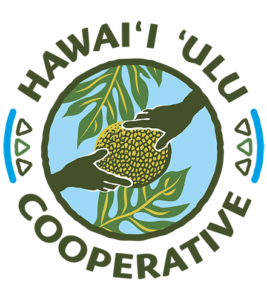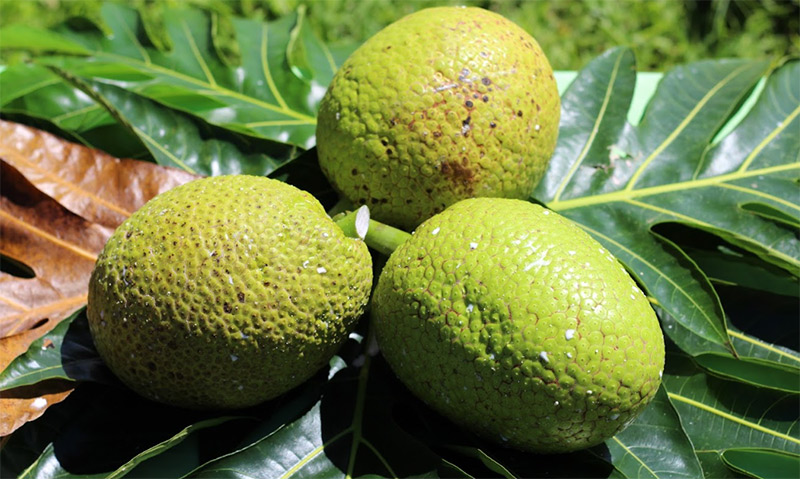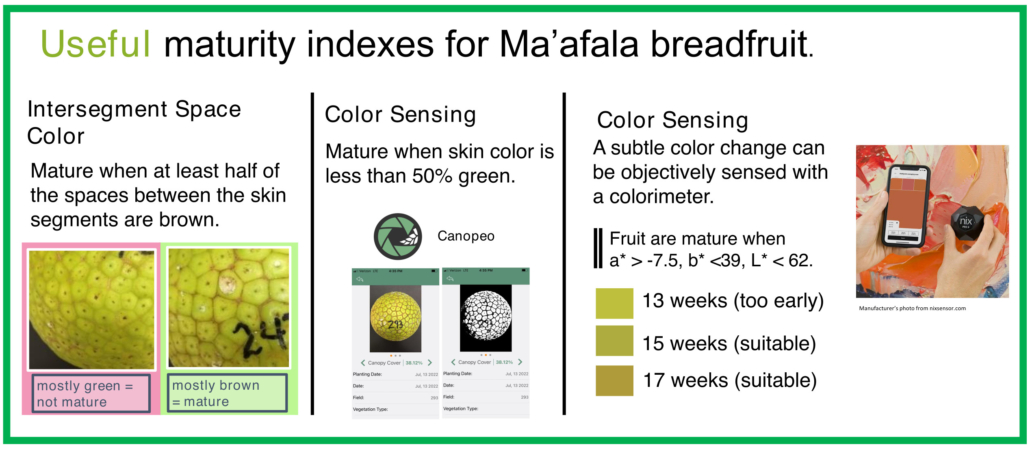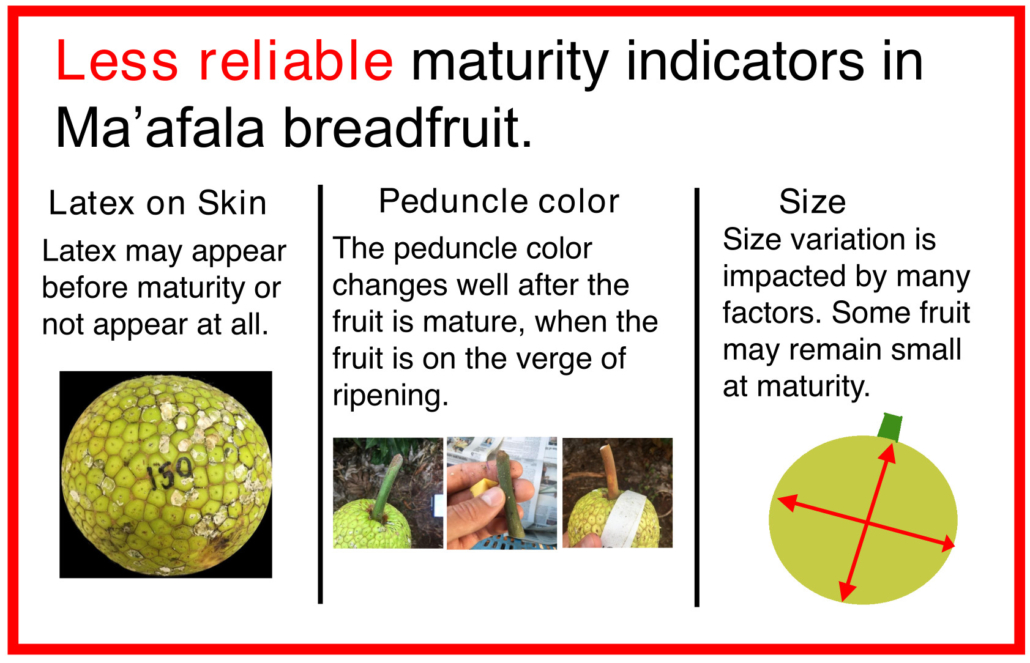Maʻafala Breadfruit Maturity and Harvesting Guide
Ben Wiseman, a Ph.D. student and Graduate Research Assistant specializing in Tropical Plant Pathology at the University of Hawai’i at Mānoa, has created a handy guide on the maturity stages of the Maʻafala ʻulu variety.
This guide is intended to help co-op and community members correctly identify the maturity and when to harvest their Maʻafala ʻulu. Watch our ʻulu varieties video to see if your ʻulu tree is a Maʻafala. A maturity index for breadfruit indicates when the fruit is fully formed, has ideal eating qualities, and hasn’t started to ripen.
There are many different indicators used to identify the stages of maturity. However, some can be more reliable in determining maturity than others.
Reliable Indexes:
- If the spaces between the skin are brown
- If the entire fruit is less than 50% green
- Certain colors can determine how old the fruit is
See the image below.
Less Reliable Indexes:
- The white sticky sap, also referred to as the latex, can appear before the fruit is mature or not at all
- The stem at the top of the fruit also referred to as the peduncle, changes color well after harvesting
- The size of fruit varies and even small fruits can be mature
See the image below.
Using the index guide is beneficial in ensuring all of your ʻulu harvests are uniform. This can be beneficial for marketing and prolonging post-harvest shelf life.






